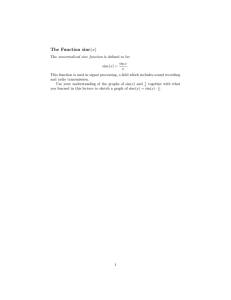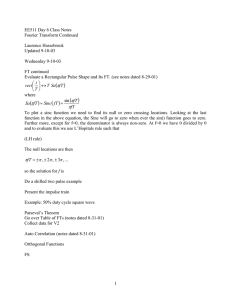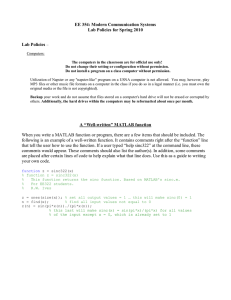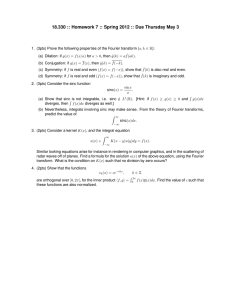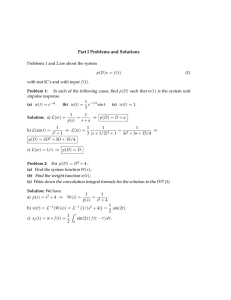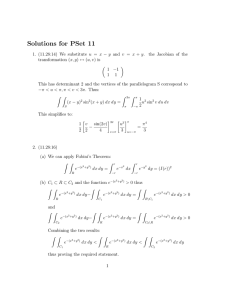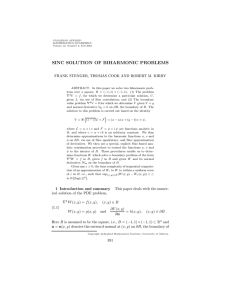The Function sinc(x)
advertisement
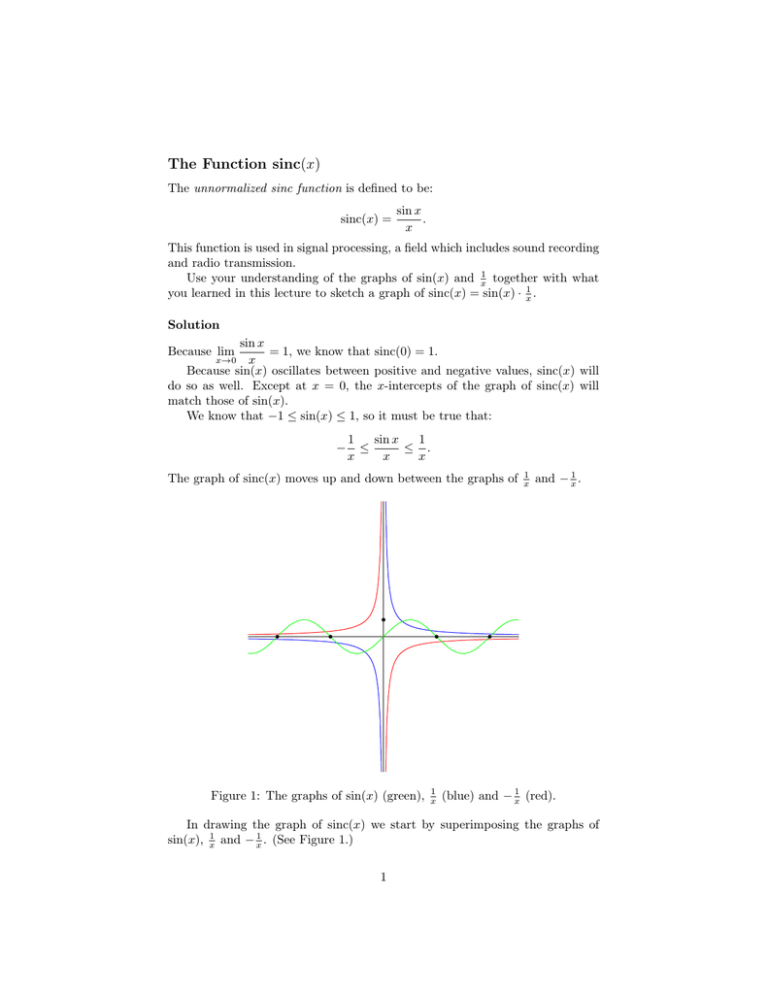
The Function sinc(x) The unnormalized sinc function is defined to be: sinc(x) = sin x . x This function is used in signal processing, a field which includes sound recording and radio transmission. Use your understanding of the graphs of sin(x) and x1 together with what you learned in this lecture to sketch a graph of sinc(x) = sin(x) · x1 . Solution sin x = 1, we know that sinc(0) = 1. x Because sin(x) oscillates between positive and negative values, sinc(x) will do so as well. Except at x = 0, the x-intercepts of the graph of sinc(x) will match those of sin(x). We know that −1 ≤ sin(x) ≤ 1, so it must be true that: Because lim x→ 0 − 1 sin x 1 ≤ ≤ . x x x The graph of sinc(x) moves up and down between the graphs of Figure 1: The graphs of sin(x) (green), 1 x 1 x and − x1 . (blue) and − x1 (red). In drawing the graph of sinc(x) we start by superimposing the graphs of sin(x), x1 and − x1 . (See Figure 1.) 1 When x < 0, both x1 and sin(x) are negative, so their quotient is positive; sinc(x) turns out to be an even function. Knowing this, we quickly guess that the graph of sinc(x) looks like graph shown in Figure 2. (It’s not easy to tell what the graph will look like near x = 0. We could deal with this by plotting a few points using a calculator or by learning more calculus and then returning to this problem.) Figure 2: The graph of sinc(x). 2 MIT OpenCourseWare http://ocw.mit.edu 18.01SC Single Variable Calculus�� Fall 2010 �� For information about citing these materials or our Terms of Use, visit: http://ocw.mit.edu/terms.
